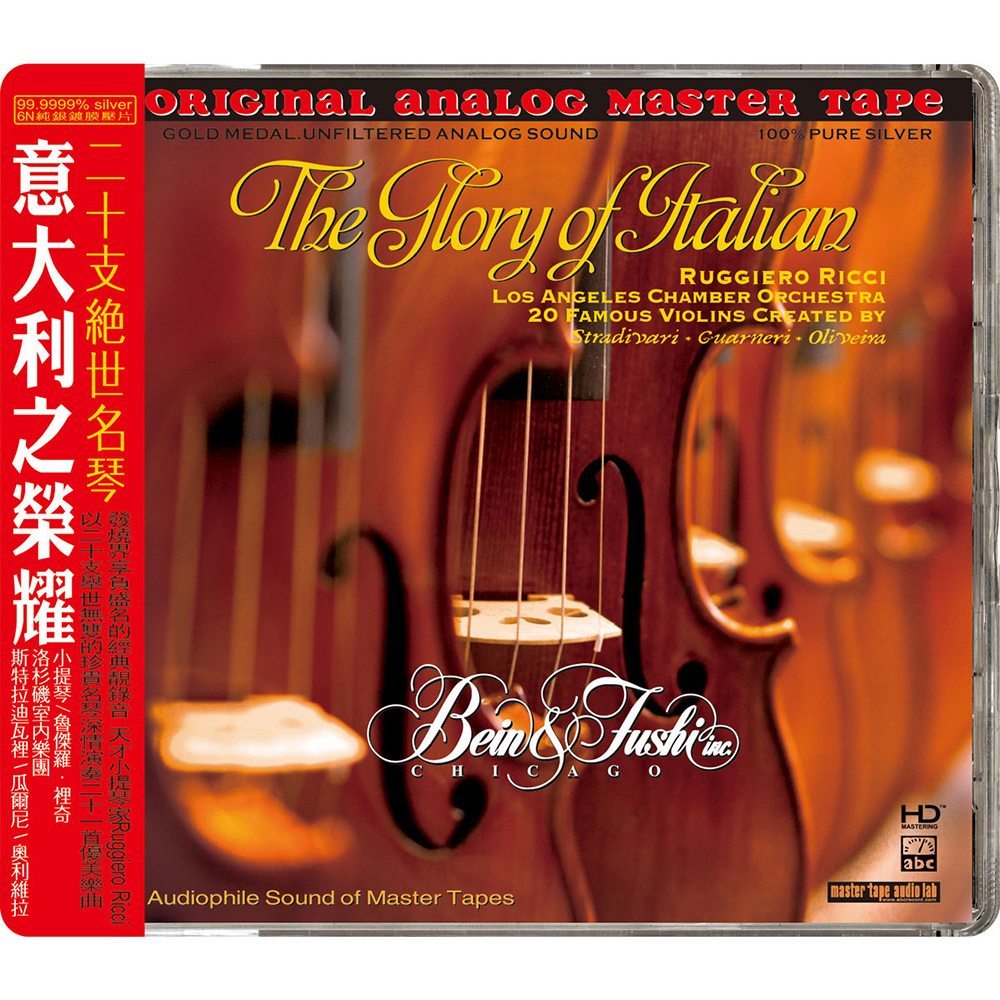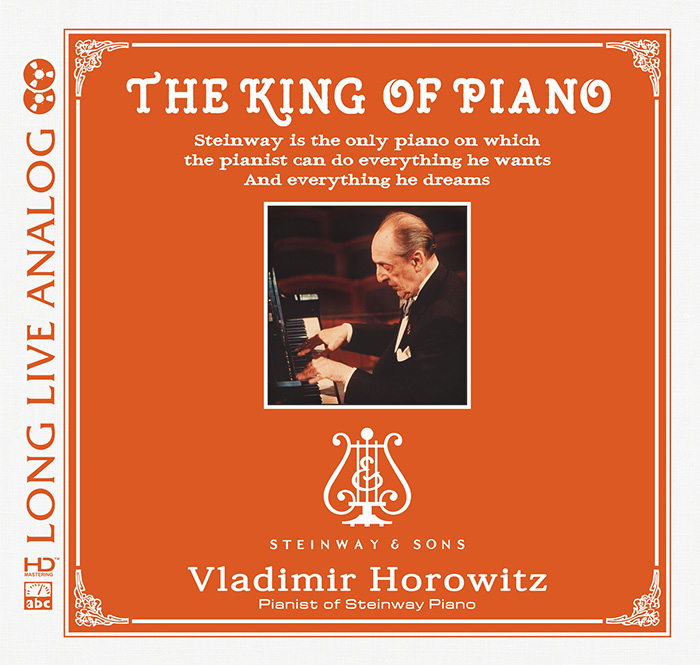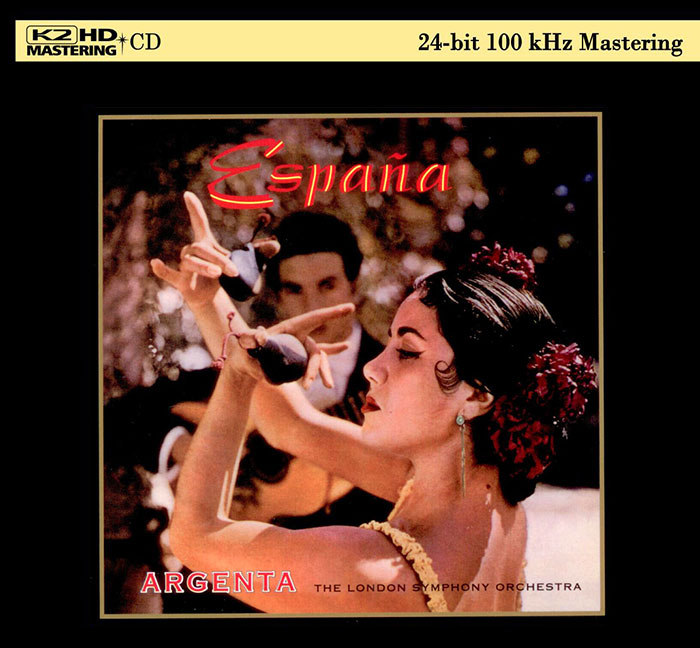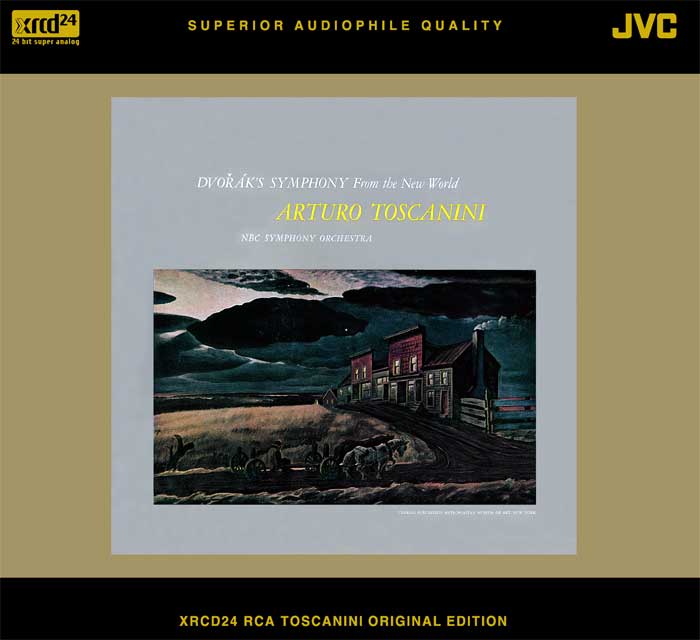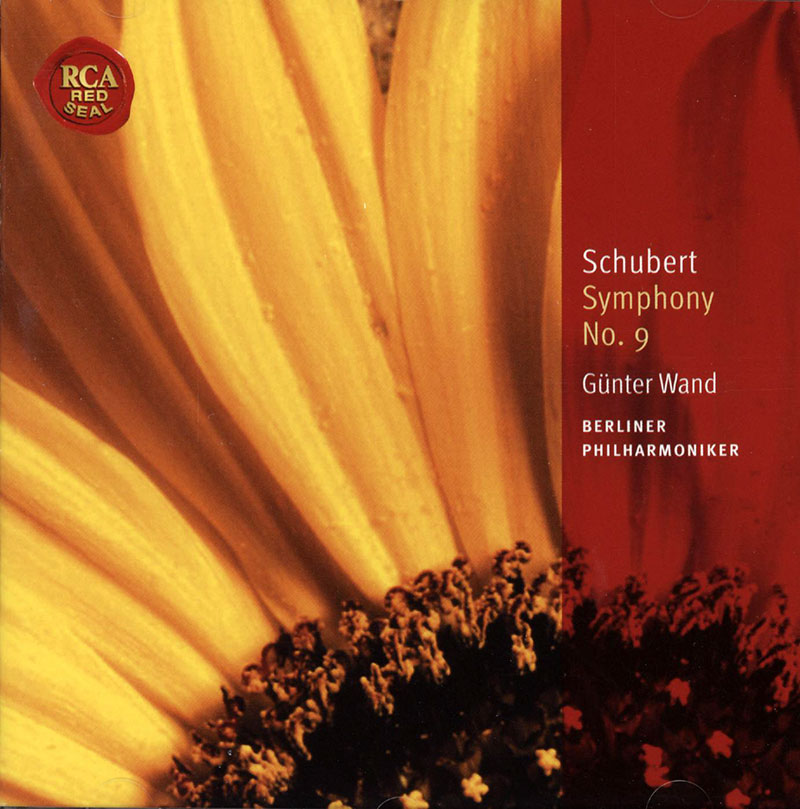Logowanie
Mikołaj - ten to ma gest!
Miles Davis, Horace Silver, Jay Jay Johnson, Percy Heath, Kenny Clarke, Lucky Thompson
Walkin'
20bit K2Super Coding - ale jak to brzmi!
Kasety magnetofonowe
Winylowy niezbędnik
ClearAudio
Double Matrix Professional - Sonic
najbardziej inteligentna i skuteczna pralka do płyt winylowych wszelkiego typu - całkowicie automatyczna
SARASATE, KREISLER, FAURE, RACHMANINOV, YSAYE, Ruggiero Ricci, Los Angeles Chamber Orchestra
Ruggiero Ricci - The Glory of Italian
- Ruggiero Ricci - violin
- Los Angeles Chamber Orchestra - orchestra
- SARASATE
- KREISLER
- FAURE
- RACHMANINOV
- YSAYE
ULTRA Analog CD - AAD is a Digital Copy Of The Master Tape - SILVER CD
Cząsteczki srebra są jednolite i mają stały współczynnik odbicia, co zapewnia równą, reprodukcyjną jakość dźwięku. Posrebrzany `CD 6N ma również wyższy współczynnik odbicia niż 24-karatowe złoto.
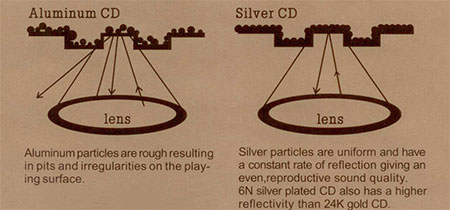 Ruggiero Ricci began playing the violin at age six, with Louis Persinger. Later teachers included Michel Piastro, Paul Stassevitch and Georg Kulenkampf. As Ricci advanced into his teenage years, some critics suggested that his technical talent was overtaking his interpretive ability. Yet it was at this time that Mr. Ricci plowed into the music that would later help him reinvigorate his career: the 24 Caprices, Paganini’s fiery and daunting works for solo violin. He played the pieces frequently during World War II, alone on stages in front of soldiers while he served as an “entertainment specialist” in the Army Air Forces.
Ricci had always been fascinated by Paganini and it was through intense study of his music that he overcame many of the difficulties of the solo repertoire. He carefully analyzed all 24 Paganini Caprices down into a system where he could see Paganini's manner of fingering, shifting and bowing. He claimed that he learnt more about technique from Paganini than from any of his teachers. In fact, Ricci was the first violinist to record all 24 Caprices.
Besides, Kreisler and Heifetz were the violinists Ricci most emulated during his formative years, he said." There are many great violinists. But I would say Kreisler was representative, and Heifetz was representative. They're both different, but they both have a stamp, or a style," Ricci said. "I don't care what anyone tells you, when you learn anything, you copy. You can't help being influenced by whatever you hear. So sometimes we're a composite of different influences. I'm a composite of Kreisler influence, Heifetz influence. Those two. I think people recognize my style, that it's not a copy of Heifetz, or of Kreisler. But they did influence me."
Ruggiero Ricci began playing the violin at age six, with Louis Persinger. Later teachers included Michel Piastro, Paul Stassevitch and Georg Kulenkampf. As Ricci advanced into his teenage years, some critics suggested that his technical talent was overtaking his interpretive ability. Yet it was at this time that Mr. Ricci plowed into the music that would later help him reinvigorate his career: the 24 Caprices, Paganini’s fiery and daunting works for solo violin. He played the pieces frequently during World War II, alone on stages in front of soldiers while he served as an “entertainment specialist” in the Army Air Forces.
Ricci had always been fascinated by Paganini and it was through intense study of his music that he overcame many of the difficulties of the solo repertoire. He carefully analyzed all 24 Paganini Caprices down into a system where he could see Paganini's manner of fingering, shifting and bowing. He claimed that he learnt more about technique from Paganini than from any of his teachers. In fact, Ricci was the first violinist to record all 24 Caprices.
Besides, Kreisler and Heifetz were the violinists Ricci most emulated during his formative years, he said." There are many great violinists. But I would say Kreisler was representative, and Heifetz was representative. They're both different, but they both have a stamp, or a style," Ricci said. "I don't care what anyone tells you, when you learn anything, you copy. You can't help being influenced by whatever you hear. So sometimes we're a composite of different influences. I'm a composite of Kreisler influence, Heifetz influence. Those two. I think people recognize my style, that it's not a copy of Heifetz, or of Kreisler. But they did influence me."































